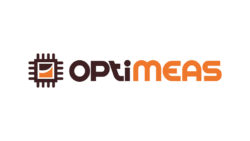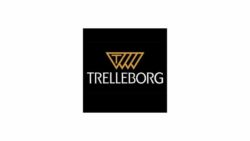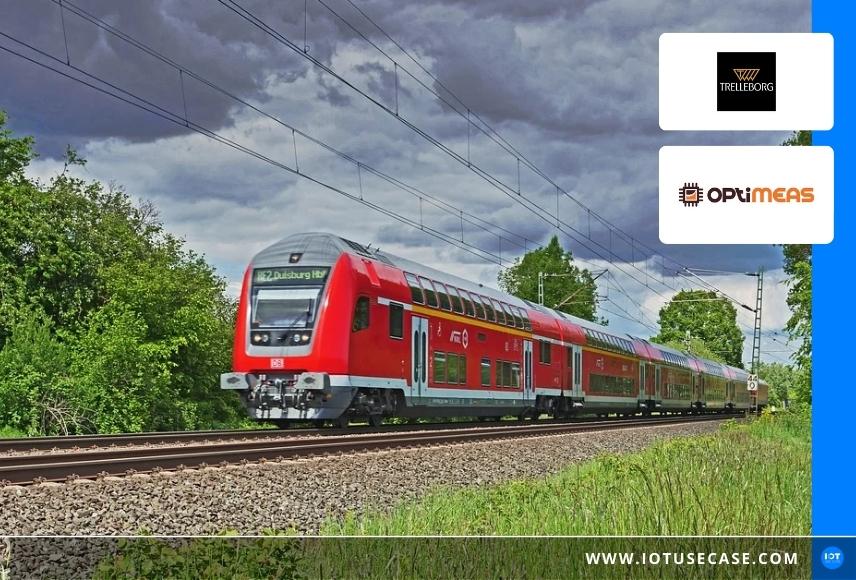Vacation on an island? No one would probably say no to that at the moment. But what about island solutions in industry? For users, these are increasingly creating more EFFORT instead of more VALUE – an important focus of the 35th episode of the Industrial IoT Podcast. The interview guests Burkhard Schranz (Managing Director, optiMEAS) and Patrick Zenker (Development Engineer, Trelleborg) report on their successfully implemented use case in the rail vehicle industry, current developments and future visions.
Podcast episode summary
The company optiMEAS was founded in 2009 with the aim of rolling out “internet-based measurement technology” in the industry. Since then, the company has been digitizing physical processes in a wide range of industries and, in addition to the rail vehicle industry, has also enriched the electromobility, construction and agricultural machinery, plant engineering, and energy industries, among others, with its intelligent solutions. The use case is about their joint project with Trelleborg, a global leader in the development of polymer components for sealing and damping applications. The topic of the project is the smart, digital transformation of rail vehicles and all their components.
How do optiMEAS and Trelleborg go about collecting data and generating added value? As Burkhard Schranz casually puts it: “We make “dumb” components smart!”. Components that are already manufactured in a similar way are themselves converted into sensors. They monitor their own performance and, in interaction, the entire vehicle. Changes in driving style, possible bearing damage or other problems are detected and communicated at an early stage before major failures occur. In this use case, we are talking about safety-critical components whose proper functioning is tied not only to money but also to human lives. This fatigue monitoring makes it possible to calculate the service life of the components based on their actual load in the field – an enormous benefit of the solution. The measurement data can also be used to optimize planned replacement intervals, service and overall maintenance. This predictive maintenance improves processes and directly generates significant monetary savings.
Furthermore, this podcast episode criticizes the so-called island solutions and discusses holistic, cross-system approaches that focus on the end customer. It is about retrofitting and added values that optiMEAS has been able to achieve in other areas, such as concrete pumps or high-voltage disconnectors. An important future goal is also to show error patterns and their origin in concrete terms.
Podcast interview
Hello Burkhard, hello Patrick – welcome to the IIoT Use Case Podcast. I am very happy that you are with us. Thank you for taking the time. I would start directly with Burkhard and a small round of introductions.
Burkhard
Hello, I am Burkhard Schranz, Managing Director of optiMEAS. I started the company in 2009 together with three other founders with the background of internet-based measurement technology. Of course, this is no longer a modern term – today we call it Industrial IoT. That’s why I’m exactly in the right place with my topic with you in the podcast. The company deals with the digital transformation of physical processes. Our main markets are rail vehicles, construction machinery, agricultural machinery, electromobility, plant engineering and the energy industry. Why so many different industries? This is simply because we can cover a whole range of applications with one and the same technology.
To make the round of introductions complete, Patrick, can you say a few points about yourself and your company?
Patrick
My name is Patrick Zenker. I am a development engineer at Trelleborg in the Innovation and Digital department. About my background: I actually come from more of a typical machine tool background. I trained there and worked as a commissioning technician. After a certain time, I finally decided to study. I studied mechatronics up to my master’s degree and then came to Trelleborg through my master’s thesis and the internship, where I still work now. The area I work in is actually everything – we always say it so nicely here – where a cable comes out the back somewhere. That’s a bit out of the way of our normal day-to-day operations. Trelleborg is a group of companies from southern Sweden. As the name suggests, we come from the city of Trelleborg. We are a global leader and specialist in the development of polymer components, largely for sealing and damping applications. We are divided into three main business areas: Firstly, Trelleborg Sealing Solutions, which mainly deals with sealing technology. Then Trelleborg Wheel Systems, this is really about tires in all business areas from bicycles to tractors. And finally, there is Trelleborg Industrial Solutions, where we are assigned here in Velten near Berlin. We deal mostly with the remaining applications where polymer solutions are required. For us here in Velten, this is specifically the rail vehicle sector, as Burkhard has already mentioned. Here, we call it OHI, or Off Highway Industry. This includes such applications as industrial anti-vibration applications, construction land machinery, marine or aerospace.
I would ask a little bit more about that in detail right away. First of all, we have chosen the topic of rail transport today. You both deal a lot with clients in the field. I’d like you to explain that to listeners who might not be that deep into that yet, to situate the issue a little bit. Burkhard, can you briefly explain to us what the different roles are in rail transport and give us a bit of an introduction to the subject?
Burkhard
You have to think about it first: What is the benefit of all this? Why are we pursuing digital transformation in rail transport? I mean, everyone knows it: you’re standing in front of the door and the door doesn’t open. The toilet is locked because it is not emptied properly – these are such simple things. But this can of course also go as far as a drive or motor failing, the brake not working properly, a bearing being broken. All of these things lead to getting service or maintenance needs in some way. In terms of the distribution of roles, Germany is much more heterogeneous today than it was many years ago. Today we have operators who have regional routes, individual railroads. Especially in the metropolitan areas, these are different operators of the routes. On top of that, there are maintenance staff. Someone is coming to make the timetable. It comes to the track operators who provide the tracks, to the point that of course the energy has to come from somewhere. That is, we have quite a few, I’ll call them stakeholders involved, all of which are, of course, a component in making the overall process work. What we are doing now: We are looking at using our technology to get to the individual components, monitor the components and try to find out what may have gone wrong in the past. How did any very specific error pattern come about? In this way, we support maintenance, service, servicing, and ensure that such a vehicle does not break down on the track, that nothing breaks down with a vehicle in operation, but that one is serviced before or after.
Now you had talked about different components: By that you mean the various components within these rail vehicles, right? This can be an engine, but it can also be any other component?
Burkhard
Yes, a component for me is indeed a door, an engine, a wheel with a wheel tire, a bearing, and especially, of course, all that we talk about with Patrick and work with Trelleborg. We’re talking intelligently made components here – but I don’t want to anticipate anything, but I think Patrick, would certainly like to say something himself.
Patrick, you had just said that you are also active in various vibration applications and in the industrial field, especially with regard to polymers. I’d like to flesh that out a little bit more. Can you introduce us to the use case and the rail sector – what is the customer using from you? How do you have to imagine this?
Patrick
So we at Trelleborg are really mostly used in the rail vehicle sector, in the bogie, where it’s about decoupling oscillations and vibrations from the passenger and the vehicle. In other words, the passenger has a pleasant and safe ride in the vehicle and is not influenced all the time by any dynamic properties of rails and wheel track contact. We want to decouple vibrations and provide all relevant systems and components for this purpose. Here we have the topic of systems and components. Systems are, for example, air filter systems, which certainly everyone knows. These are those very large air filters that sit under the body of the car and are also called the secondary spring stage. This is actually not just one spring, but several springs that interact and that we are developing. Components include, for example, axle-guide bearings, which are used to allow the wheelset to adjust to the curve when cornering. They provide wear and noise reduction. Another main component, especially for regional and suburban trains, for example, are the primary conical springs. As mentioned before, the air spring is the secondary spring stage and we supply the primary spring stage with a rubber-to-metal component called a conical spring. We thought this would be a great component that could generate considerable added value for operators and users.
Now Burkhard had already mentioned at the beginning that there are different roles and stakeholders. I would be interested to know what the classic challenges of your customers are in this environment.
Patrick
On the one hand, of course, these are highly safety-critical components. So our components are used in critical environments that contribute significantly to the overall safety of the system. Everyone knows the bad accidents. We are a company that really stands by as a specialist right from the development process and also delivers really high-quality products to the market. Another point is then in any case the reliability of the components. Of course, they have to meet a certain service life and fulfill it reliably. And then, of course, the main application of our products is to enable a high level of driving and operating comfort and, in this context, to ensure cost-effectiveness for our customers. These challenges are set by our customers and we also regularly tackle them together in projects from the first development steps onwards. The requirements and the applications themselves are already in the upper class.
How is this maintenance done nowadays? Does an employee come in there and have specific intervals where they check?
Patrick
For rail vehicles, it is largely the case that the maintenance intervals are fixed. Fixed maintenance intervals mean in this case: Either it is a) a certain service life of components or service life of the entire vehicle, or b) a certain mileage. Depending on which limit is reached first, this then defines the time of maintenance or replacement of the components. And that, of course, brings us to a very, very interesting point. These fixed maintenance intervals are of course not defined as a function of loads from the routes on which they are used or environmental conditions, but are defined holistically for the vehicle in the development process. And that’s when you realize that there really is an extremely high potential for optimization.
In general, I talk about IoT in the podcast, which means that live data in the field is also interesting. What data is of specific interest there for maintenance? And what knowledge can be generated from this data?
Patrick
Of course, we want to create information from measurement data – that is the main task. It is certainly interesting for any engineer to see a nice wriggling graph with acceleration and temperatures on it. But the main point is really to generate the information for customers and users for which, of course, you need a certain component and also system competence. And we bring this with us through our experience and generate the information from the measured values that we really measure with our system, which then really offers the customer added value. For example, on the example we’re talking about, we’re placed in the conical primary spring with a measurement system and we’re actually measuring paths – really purely static from 0 Hertz to dynamic 100 Hertz. However, we can also derive things from these paths via the system competence, such as forces. We know the characteristics of our spring and can also see loads in the form of forces on bogies and vehicles via the spring travel that we measure. And there are really many, many ways to use and process this data for a wide variety of applications.
That is, you bring the knowledge, you set certain thresholds that you draw from your expertise and experience, which in turn feeds into this IoT partial solution?
Patrick
We have the methods in house. One of our main competences is the reliability of our components. We calculate the service life beforehand, for example. We ask ourselves what loads are to be expected in practice and, of course, the component must be designed accordingly. Now, of course, we can say through the measurement system: These loads were expected with the expected lifetime and these loads were actually experienced by the component in operation. From this, we can then calculate how long the service life really is in operation. This is one of the main applications, for example, where you can really optimize replacement intervals in this respect.
Burkhard, I have a question for you: We had talked about the different roles, especially in maintenance. Who is the end user in this solution? Are there more than one?
Burkhard
Basically, we always have to differentiate: Are we dealing with the component or are we dealing with the complete vehicle, machine or system? What we’re seeing more of is exactly what’s happening at Trelleborg right now, which is making a – I’ll call it dumb – component smart. Basically, it’s a component that has been manufactured in a similar way for a very, very long time. And now we take this component and turn it into a sensor, so to speak, that monitors itself on the one hand, but also partially monitors the entire vehicle in addition. As Patrick has already said: We measure forces on a wagon, on a material that moves in some way, that fatigues. We have a completely different way of assessing how the overall work, the overall vehicle, is changing. That you can detect bearing damage in good time, that you can detect when a wheel tire on such a vehicle is possibly no longer quite round. Here I can derive quite, quite a lot of information from a component that I need anyway, and which I have now simply made smart. We see that in many other industries as well, that the efforts are going towards doing something like that – whether it’s hydraulic cylinders or whether it’s filters for compressed air. These then result in the overall system. And the data we generate there can, of course, be used wonderfully for the vehicle manufacturer’s engineering. Based on the data, he can check whether his interpretation is correct. Of course, we can use the data we obtain there to service the maintenance department, possibly in time to say: Watch out, in 14 days, in four weeks or in eight weeks, the bearing may break down, why don’t you replace it? If we can do that, we can make an appointment at the workshop in time and do the replacement. We know which component is to be replaced. This means that the opportunities, not only for process optimization, but also for real monetary savings are gigantic at this point. And there we are – as I see it at the moment – really just at the beginning. And in principle, the whole thing is really based on the holistic acquisition of data from a system – this can be a mobile machine, a train or a construction machine, but also any production plant. And this is where we ultimately generate added value from measurement data.
Now you said you are just getting started. What is already being done today in this environment and what are future approaches?
Burkhard
So I think in the area of rail vehicles, a lot has been done for a long time, because the vehicles or all vehicles that are on the road there today, of course, have control devices, small computers, control panels. So, of course, data is already being generated. Such a complete vehicle is fully networked via bus systems. The thing that is done today is that you know where it is in the vehicle. One knows the status of the error memory, from these control units. However, this is often still a kind of symptomatic investigation. The thing that is often not deduced from this is how a defect pattern occurred. How did this come about? How can I possibly fix the cause? That’s what we’re trying to establish a little bit more right now. Not only in the rail vehicle sector, but also in other applications. To be able to say: Look a little deeper into your physical process. On an internal combustion engine, I can of course see whether it is on or off. How is the oil level, what is the current temperature and can thereby derive measures. But I can also say, how is possibly the combination of a temperature gradient, an injection pressure and the fuel consumption? How do I get a kind of energy meter based on a consumption quantity, a characteristic curve field, the current speed, which could then be a measure and a variable for a possible maintenance interval.
The bottom line is that the various stakeholders in rail transport must now also start talking to the manufacturers, as in the case of Trelleborg. You bring an intelligence to it that wasn’t there before. This means that you have already had this monitoring through bus systems, through panels, control units, etc., and now, however, that I can really save costs through precisely these error patterns and the derived measures. By using the knowledge of manufacturers, right?
Patrick
Definitely. So what we have experienced is – as Burkhard has already mentioned – that there really has been extreme progress in recent years. All suppliers to the rail vehicle industry, including us at Trelleborg, for example, have made extreme efforts to come up with really intelligent and good systems. The only problem that I actually see with the whole thing is that there have been very, very many island solutions formed in recent years. Many vendors have provided the complete system. Now the operator, the end user, says: Well, for example, I need the sensor from this component, I would like to use the gateway from this component, and I only need the temperature from that component and not the acceleration as well. And here we are back to the topic of standards, which I think is a big topic in IoT in general. We actually have quite, quite a lot of important information that helps to shape this holistic monitoring. But in my opinion, we have to find the way to each other in the future so that we use common strengths and competencies to generate the greatest possible benefit for end users and providers.
The topic of island solutions is heard again and again in many IoT topics. I think it’s super important to just talk about an ecosystem mindset across systems as well, which is often not necessarily the case today. Then the added values will also be more effective in the future. To continue this use case once again: How do I get the data into the cloud now? So, asked bluntly, Burkhard: How does that work? Do I attach a SIM card to it and send the data to the cloud via cellular? Or how exactly do I have to imagine this?
Burkhard
Basically, you’ve already drawn it the same way. However, the SIM card is not attached, it is inserted into the modem. Our classic edge devices collect data from various data sources. One source of data is the sensor installed in the damper. This provides us with multiple signal sources from multiple measurands, all of which we aggregate. We store them seamlessly, transfer them live in real time to a cloud solution, where there are then dashboards that can be freely designed. Here you can look at curves where you can also do simple limit value monitoring and say, now a path is undercut here or a temperature is exceeded. This triggers a warning message. The bottom line is that this is simply the first look into such a component. But it is even more important to look at the data over a long period of time in order to be able to really make statements about long-term operation, about changes in materials and components. In fact, this is what usually happens during such fatigue monitoring. You know how it is with paper clips: you bend them open and closed twenty-five times and eventually they break. But she doesn’t do that the first time. That is, depending on how many times I bend this paper clip, it will break sooner or later. And these are exactly the things that we are observing. This also includes the storage of measurement data – which can sometimes be faster, sometimes slower data. In any case, it’s data from many different places. The more of them I collect, the better the significance. What we want to do is not just collect data. What we want to produce is a benefit for the end user, for the customer, and for the different stakeholders. I want to be able to predict: When will a component break or need to be replaced for maintenance? For the operator, it wants to prevent a vehicle from breaking down on the track – for whatever reason. Or for the passenger to avoid the door not opening and having to go out to another door – these are all things that we can sort of manage with one and the same setting. And here I would just like to say once again: The issue of the island solution cannot be emphasized often enough. We come across that again and again. Not only in rail transport, but also in construction machinery. Each operator builds in something of his own and the one who ultimately suffers is the end customer, the operator of these machines, the contractor who stands on the construction site and simply cannot get his data together, even though he could use it well to optimize his processes. The rail operator, of course, not only wants to know what the engine is doing at the front, what my spring or my evaporation element is doing detached from it, but wants to see it all in one. That is, he wants to manage his vehicle or have a fleet view. He wants a list of his 500 vehicles and the vehicle that may get a problem soon, that needs to be at the top of his list. That may have to get a yellow light and I just have to see directly and have the ability to act on that. Without generating this benefit, the entire digitization process is of no use. You always have to keep that in mind.
I think the challenge for the end user is to really pull together these individual use cases, as you described quite nicely, at the end and have that overview in the first place.
Burkhard
Exactly, and what we’ve been trying to do since we founded the company is to have it all converge in one setting, so to speak, in one system, and not even to specify where the data is then transferred to, but to be flexible enough to serve different consumers of the data with it. That’s also a big challenge and also always the problem when we enter the market. Because of course that’s very diversified when a wide variety of applications can enter with the same systems. In the case of construction machinery, we know today – we are, for example, very common on pumps on the road – that we can save up to 40 to 50 percent of service costs with it. It’s not just that we know where it is in the vehicle, it’s that we know, what has the pump been doing for the last two weeks? How much concrete was pumped with it? So really recording hundreds of quantities that give us information. One sees similar applications in the field of energy supply. We monitor, for example, high voltage disconnectors. These are these scissors that open and close and switch these high voltage lines. You can imagine what happens when it stops working. Then a whole line is switched off, then there’s really a problem there. The maintenance of such a switch is very, very expensive. We have a certain life cycle and if you bring more safety into it and you can bring forward or extend maintenance and revision, you save money and gain incredible safety. This creates many, many use cases that are really impressive.
Now you’ve made the perfect segue to my next and almost last question. Patrick, again in your direction, what do you see as the end result for the end customer from this case that you brought to rail with all your expertise?
Patrick
The interesting thing about the whole thing is actually that we have quite, quite a lot of results. That’s also what makes the whole project so exciting. Via the measurement system itself, we not only see values or effects from the vehicle itself, but can also draw conclusions about the route. Which, of course, again offers considerable added value. I’ll just list a few things that you can capture with the system: For example, the automated measurement of the set amount. In other words, the springs lose an effective spring travel over their service life or operating time. This has to be compensated for in the maintenance shop, for example, by placing metal sheets underneath to restore the vehicle height. Until now, these were manual measurements, where employees of the maintenance plant really had to crawl under the train with a caliper gauge or a steel rule – I’m exaggerating a bit now – and measure this amount. This task could be completely eliminated by the measuring system. Furthermore, since we are in this position, we can also draw conclusions about loading conditions, for example. We can say how many people rode the train at what time. For example, I can generate information in general and say, okay, wagon 3 is relatively full and make a visual marking on the platform. Better get in line with another wagon to get a ride. For engineering, we can really deliver real load spectra. We can answer the question of what loads the vehicles are really exposed to in real operation and over what time. And also things that can lead to unplanned stoppages, such as flat spots on the wheels when the train has a brake plate, so to speak. That’s always nice to hear when you’re on the train and it really goes like “Dadack dadack”. Then the thing goes into unplanned maintenance. We can detect and measure these things and, of course, make them available to the respective end customer or end user of the system.
For me, the transferability is also always interesting. Burkhard, you’ve actually already said it: This pattern is indeed transferable to other topics. You are broadly active there, I understood so.
Burkhard
Yes, well, I mentioned it at the beginning. The construction and agricultural machinery sector is of course very, very exciting. There are also all kinds of components that can fail. Even a tractor stopping in the field is not a pretty thing. I have to tow it back, have it repaired, or something like that. It’s about increasing availability across all industrial sectors. In the end, I don’t think there’s any limit to the imagination. That’s why I said at the beginning: we are at the beginning with what we are doing. So far, I would say we have made a very good start. As far as IoT is concerned, the topics are telematics, position monitoring or the prevention of theft. Also to look at: What is the driving behavior of the driver on the construction site? How much gasoline does it consume? In the next step, we want to get into the machine and see that we increase the quality, that possibly also the design in the things, in the designs, confirm and values are created quasi on three levels. One level is clearly service: spare parts inventory, shortening service times and increasing quality in service. The second level is engineering and the third level is ultimately the end customer. It should work to build all of that into a single system that is also simply very, very attractive because of the amount of added value. On the one hand for the OEM and on the other hand also in the retrofitting sector to retrofit existing vehicles or existing machines, which by the way is also a very nice use case for Trelleborg. Namely, to say: All right, then the next damper to be replaced in an existing vehicle will be a smart damper. And that makes a vehicle that is perhaps 20 years old enormously upgraded and smart all at once.
I could go on philosophizing with you forever, but for now, thank you for these exciting insights. It was really great to show for which stakeholders which added values.













